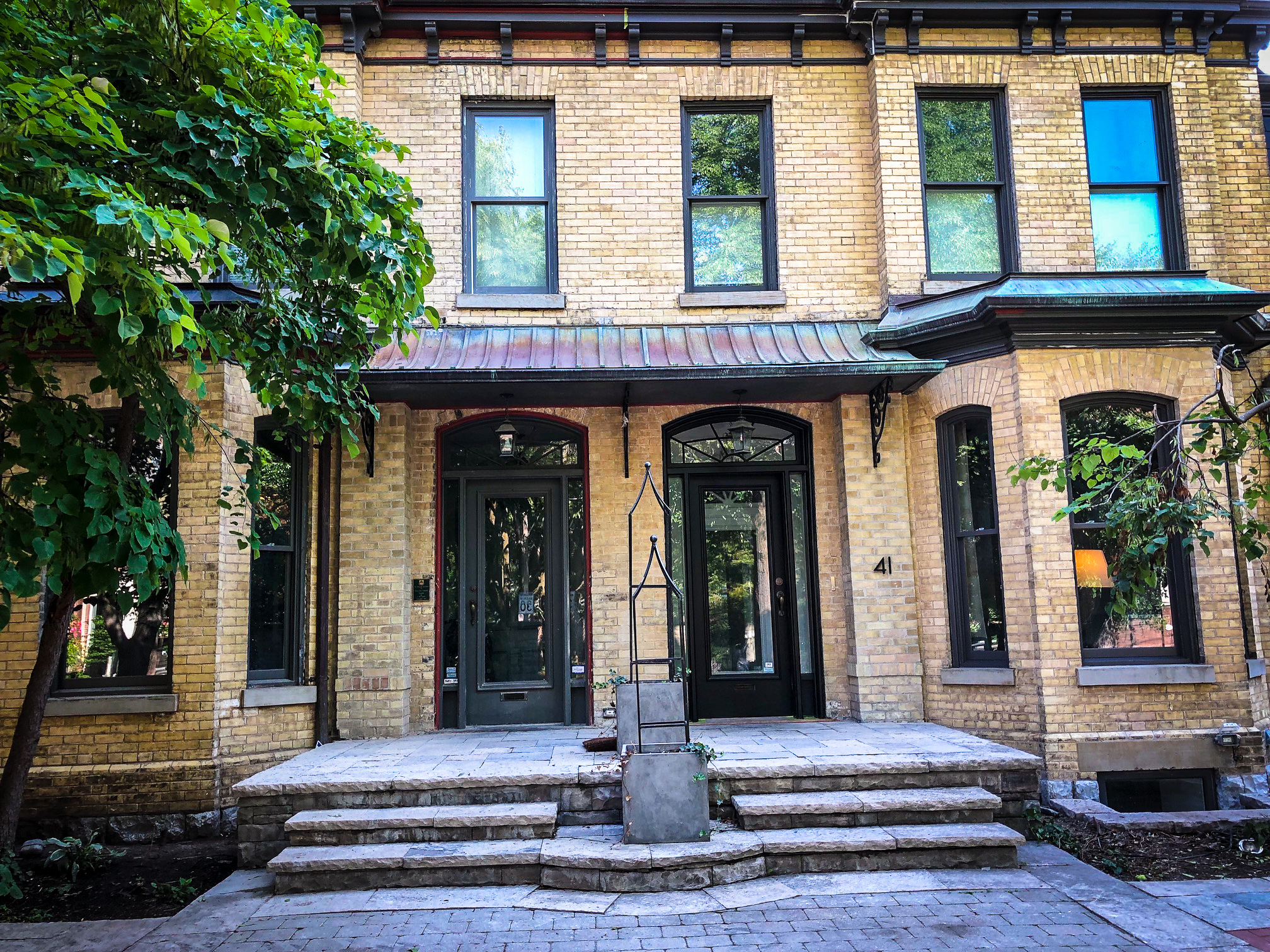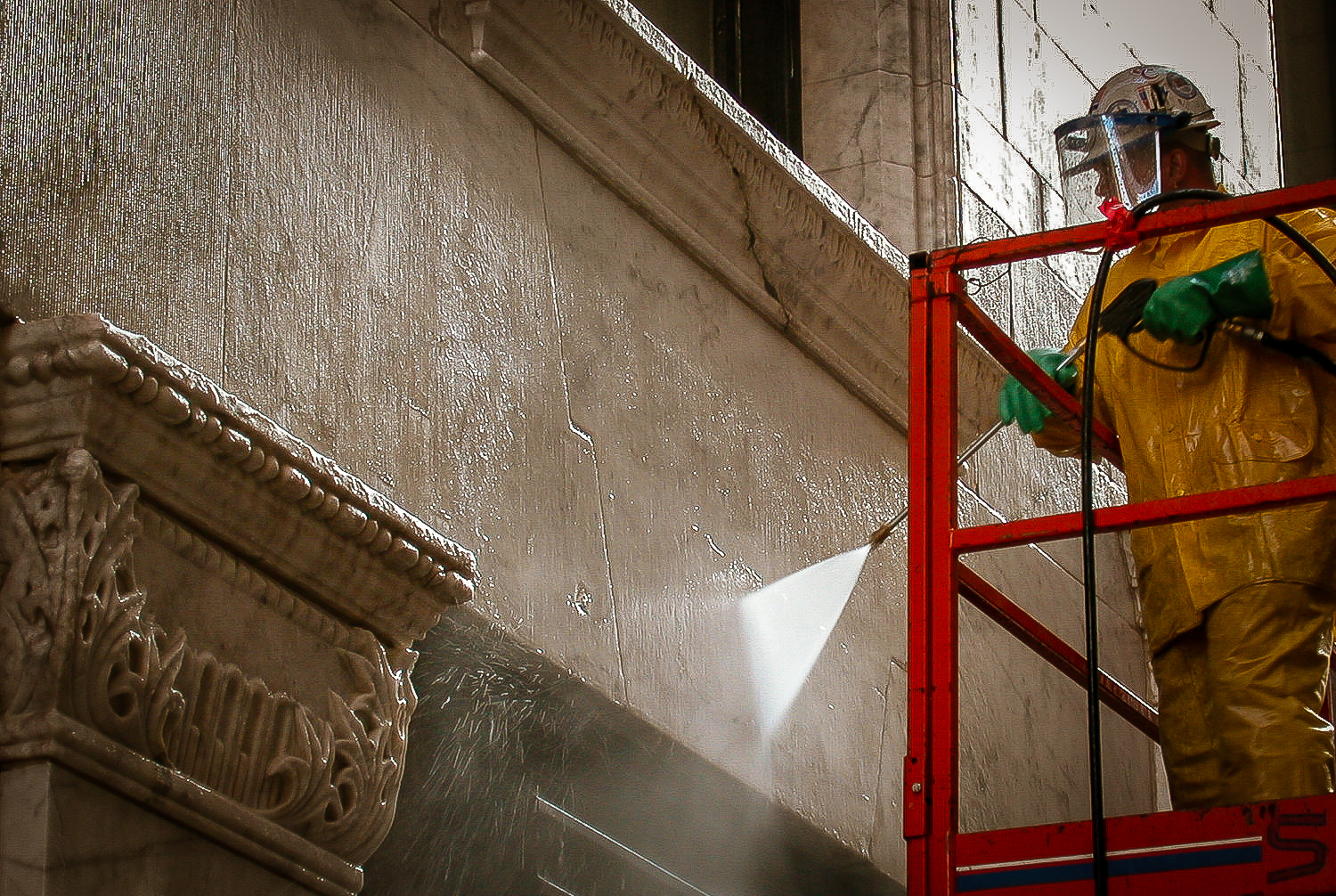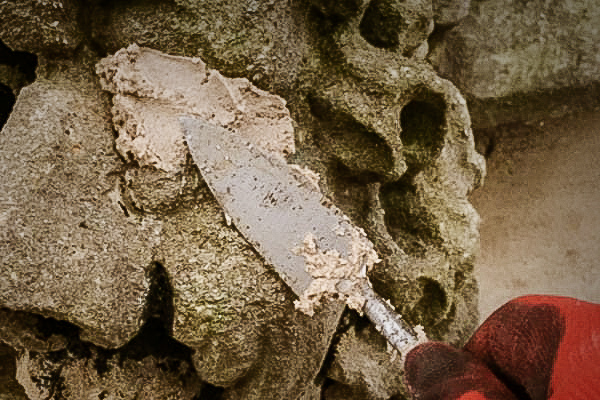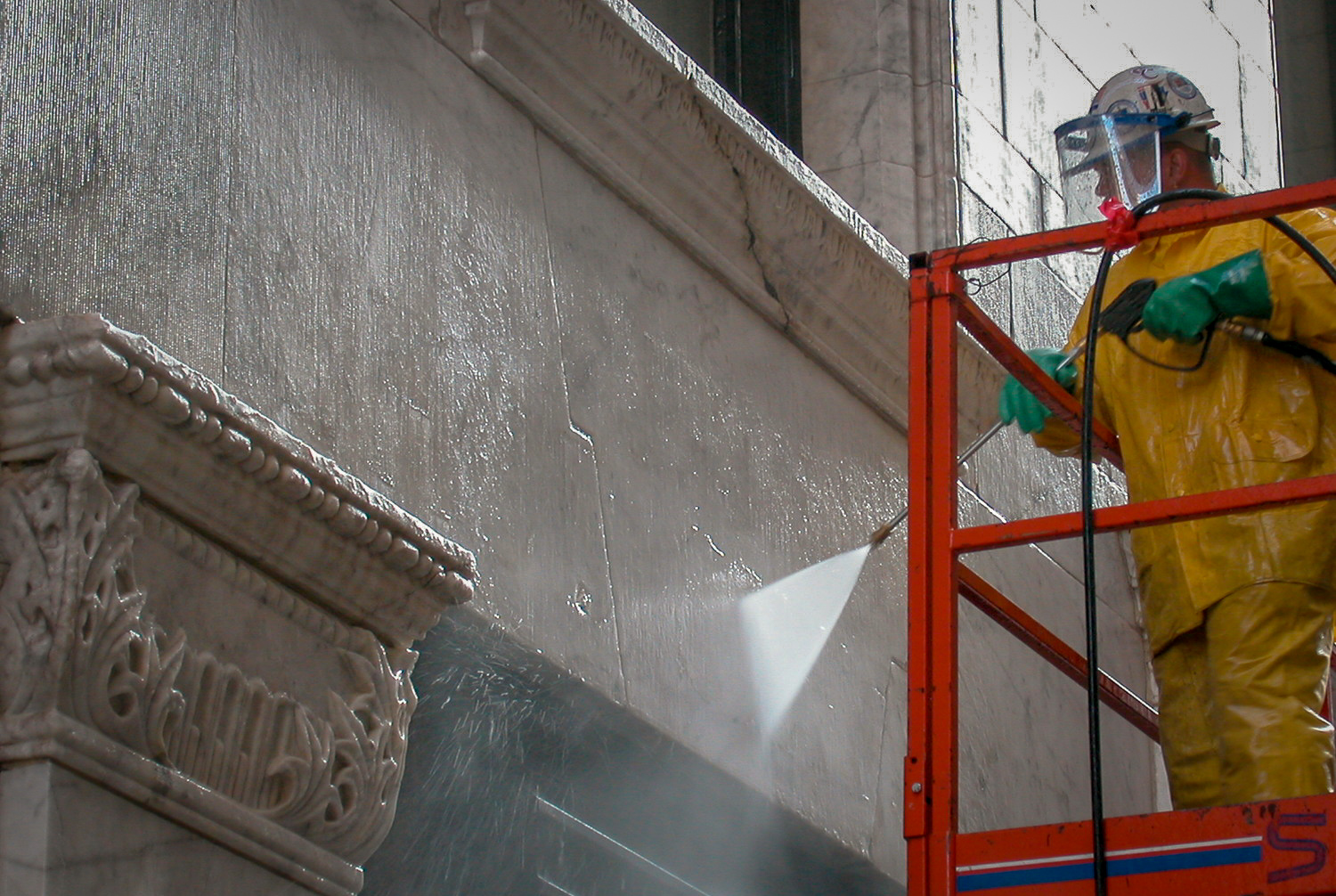Brick and stone that have been painted can be restored to their original presentation with careful stripping. Removing the layers of old paint reveals a dramatic change to the look of your property.
Paint removal allows masonry to breathe naturally. This reduces future maintenance costs preventing moisture build up behind the paint that can slowly erode the brick face.
Our paint removal process involves an application of an environmentally friendly chemical stripper. This slowly softens the paint allowing us to clean away the paint with careful pressure washing, followed by vapour blasting the remaining bits of paint. Once all the paint is removed we preform a wash with restoration cleaner, removing all residues, carbon and pollution deposits bringing the brick back to its original look.
